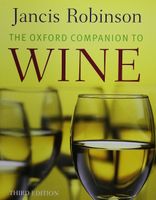Advertisement
Sparkling Winemaking: Making and blending the base wine
Published 2006
Wines that are good raw material for the sparkling winemaking process are not usually much fun to drink in their still state. They are typically high in acidity and unobtrusively flavoured. There is a school of thought that the austerity of the still wine of the champagne region, Coteaux champenois, is the most eloquent argument of all in favour of champagne’s carbon dioxide content.
It is not just in Champagne, however, that sparkling winemakers argue that balance is the key to assembling a base wine to make sparkling, and that the best sparkling wines are therefore essentially blended wines. Some fine varietal sparkling wines exist (some of the best blanc de blancs champagnes, for example), but a great sparkling wine never tastes just like the still wine version plus gas; the very nature of sparkling winemaking is to try to make a sum that is greater than the parts (although this may not be achieved, or even attempted, for cheaper wines). Those who aspire to make good sparkling wine are acutely aware that any minor fault in a base wine may be amplified by the sparkling winemaking process.


